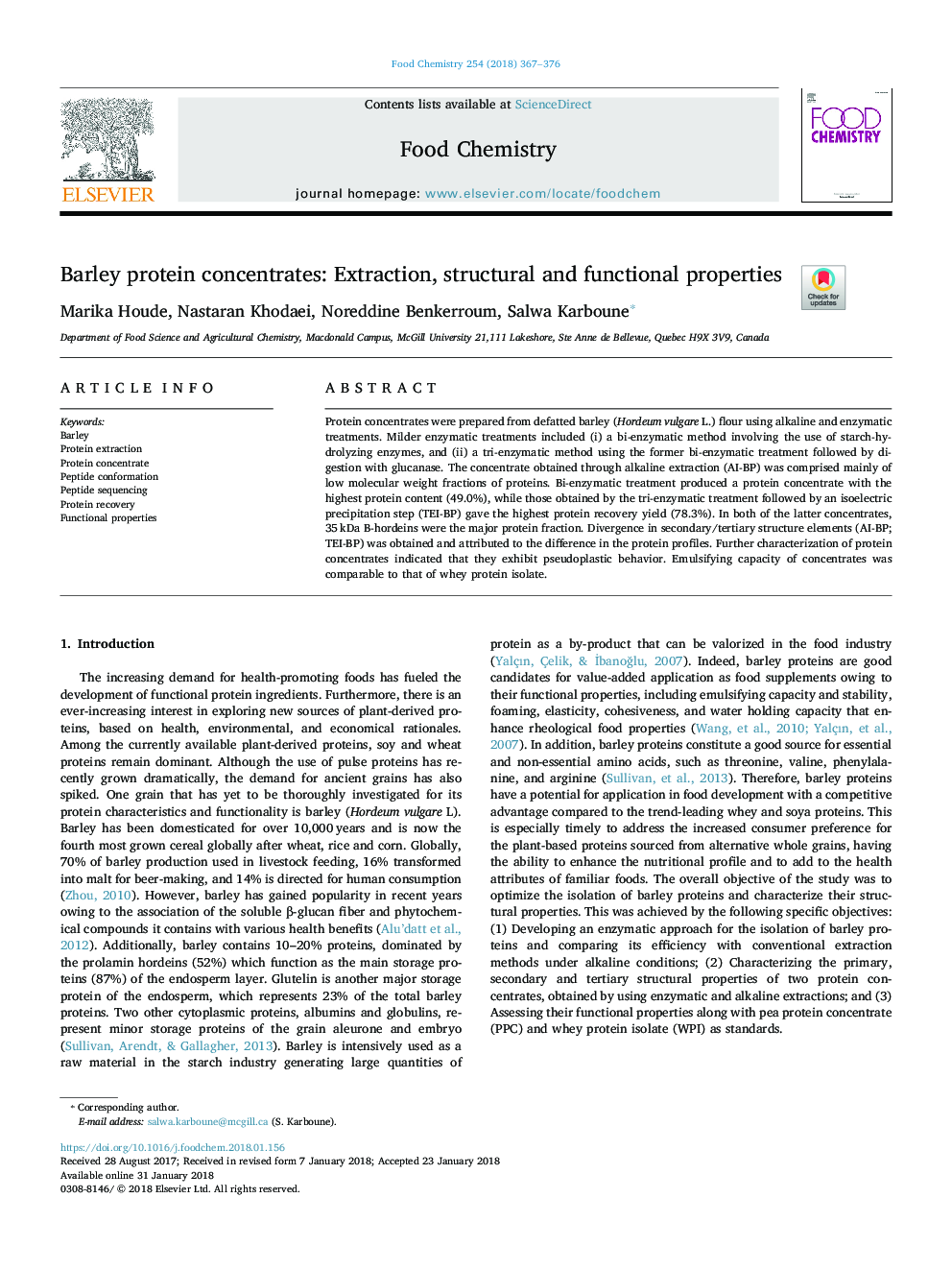| Article ID | Journal | Published Year | Pages | File Type |
|---|---|---|---|---|
| 7585578 | Food Chemistry | 2018 | 10 Pages |
Abstract
Protein concentrates were prepared from defatted barley (Hordeum vulgare L.) flour using alkaline and enzymatic treatments. Milder enzymatic treatments included (i) a bi-enzymatic method involving the use of starch-hydrolyzing enzymes, and (ii) a tri-enzymatic method using the former bi-enzymatic treatment followed by digestion with glucanase. The concentrate obtained through alkaline extraction (AI-BP) was comprised mainly of low molecular weight fractions of proteins. Bi-enzymatic treatment produced a protein concentrate with the highest protein content (49.0%), while those obtained by the tri-enzymatic treatment followed by an isoelectric precipitation step (TEI-BP) gave the highest protein recovery yield (78.3%). In both of the latter concentrates, 35â¯kDa B-hordeins were the major protein fraction. Divergence in secondary/tertiary structure elements (AI-BP; TEI-BP) was obtained and attributed to the difference in the protein profiles. Further characterization of protein concentrates indicated that they exhibit pseudoplastic behavior. Emulsifying capacity of concentrates was comparable to that of whey protein isolate.
Keywords
Related Topics
Physical Sciences and Engineering
Chemistry
Analytical Chemistry
Authors
Marika Houde, Nastaran Khodaei, Noreddine Benkerroum, Salwa Karboune,
